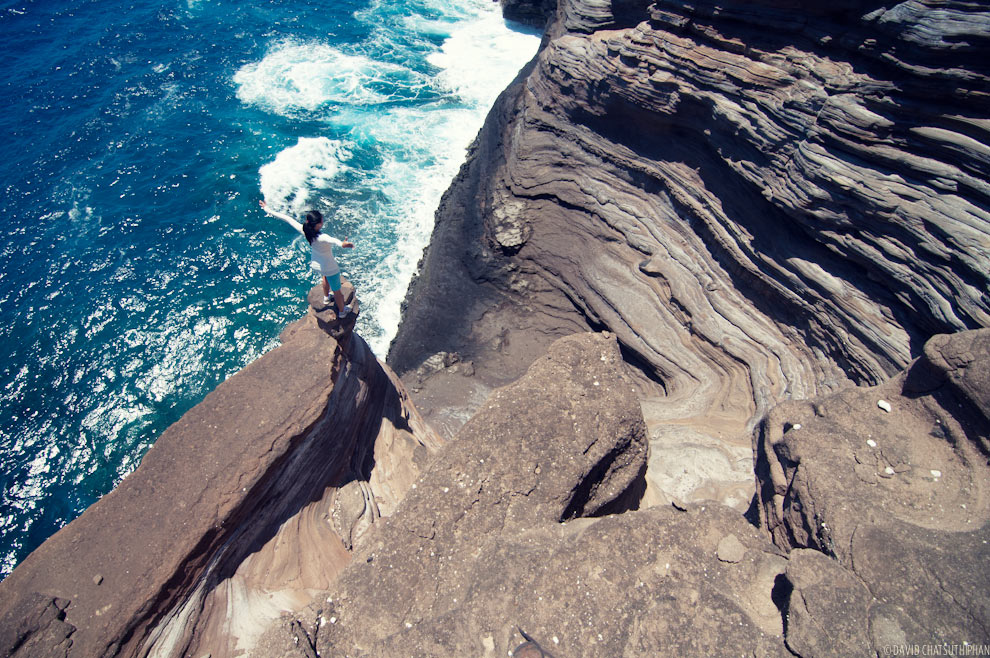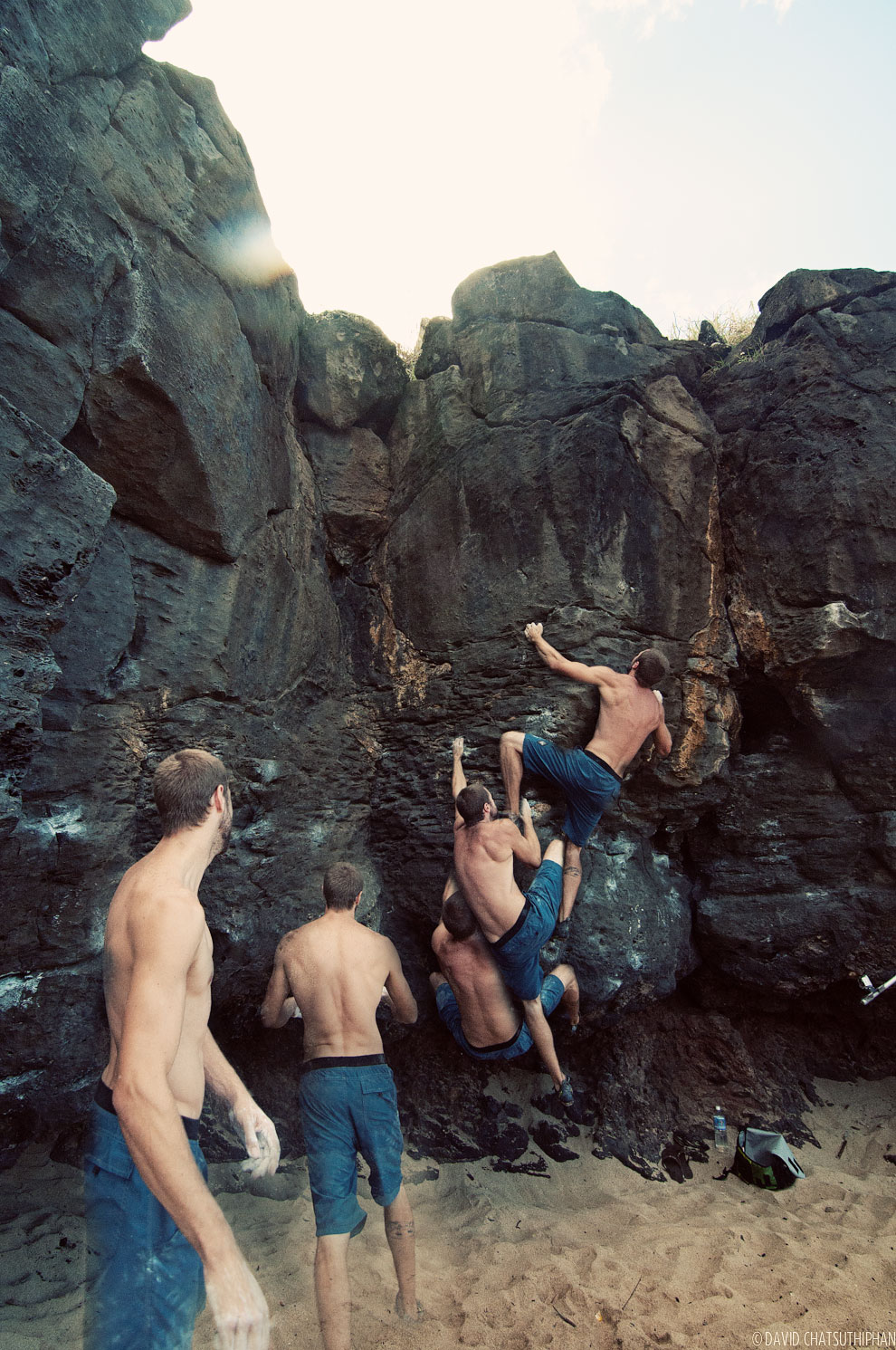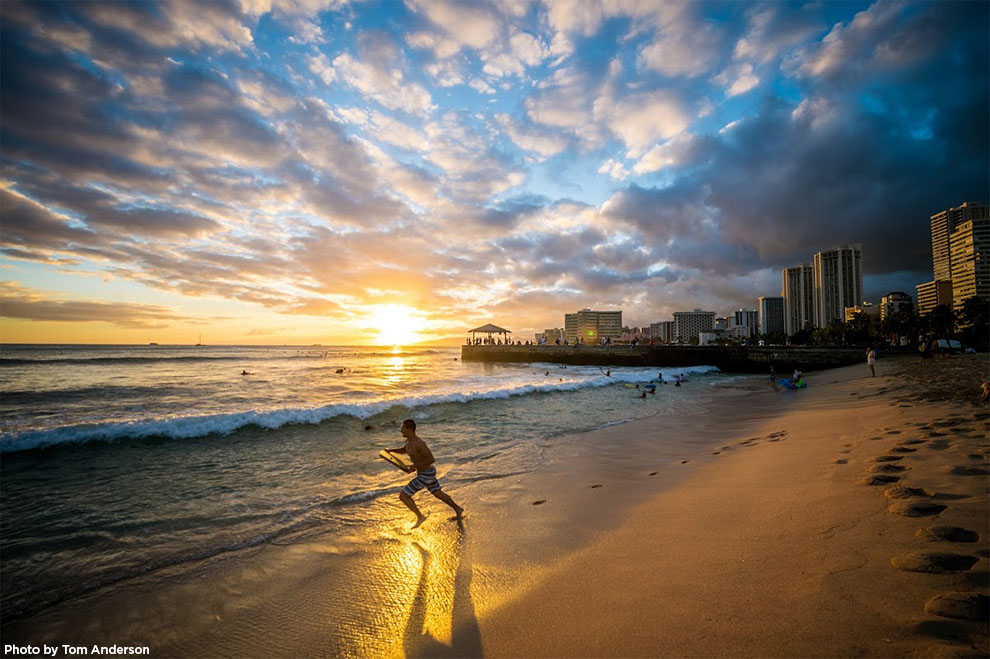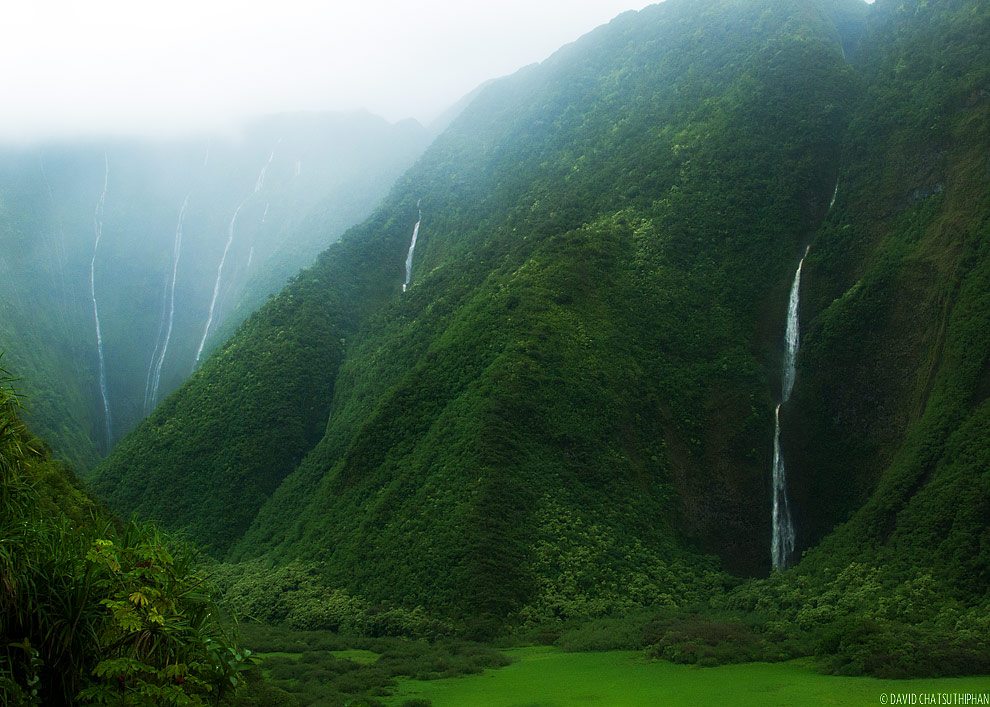
On our third day of the backpacking trip we said goodbye to Waimanu Valley.

This is the fourth post in a five-part series on Waimanu. See more:
- PART 1: Waimanu Valley via the Muliwai Trail
- PART 2: Waimanu Valley Waterfalls
- PART 3: Waimanu Valley Camping
- PART 5: Waimanu Valley Video Recap
We made our way back to Waipio Valley on the Muliwai Trail.
The return hike, in my opinion is much harder than the hike in. The section of the Muliwai Trail that takes you out of the valley is steeper and more rugged than the Z-Trail. It’s a serious thigh burner and cardio killer. By the time you get to the top of it you’re pretty tired and you still have 8 more miles to go.
But, that might just be me. Now that I think of it, most of the group powered through the hike and looked pretty fresh-faced afterwards. So, your experience may be much different than mine.
Getting out of Waimanu Valley involved a bit more effort than just the hike though. First, we had to cross a stream that had grown significantly from heavy rain the night before.
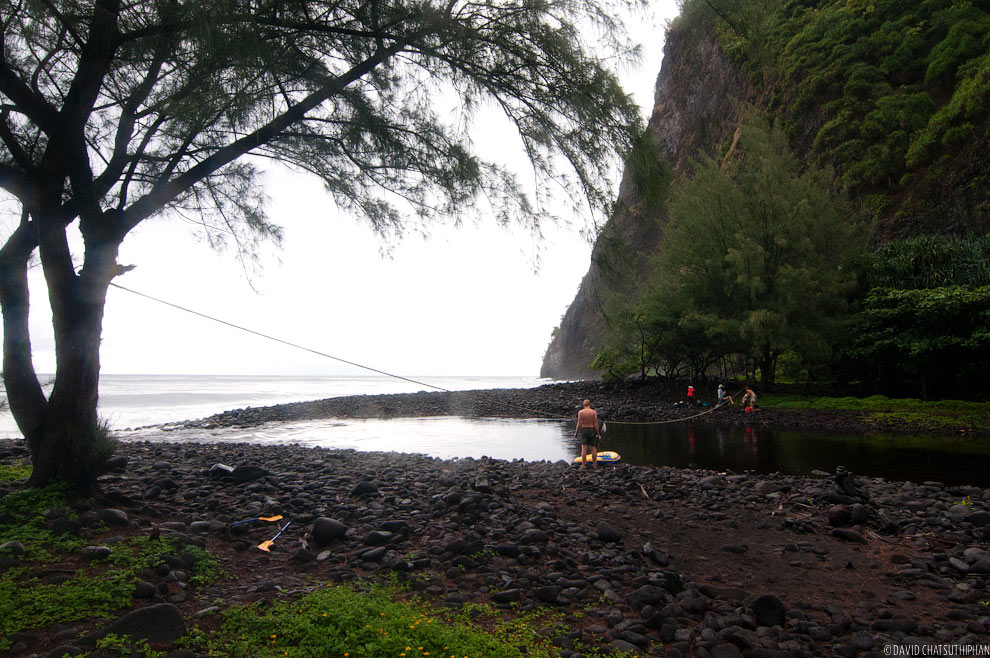
It rained heavily on our second night of the trip. A tropical depression (a minor storm system) passed by Hawaii and we caught a bit of it.
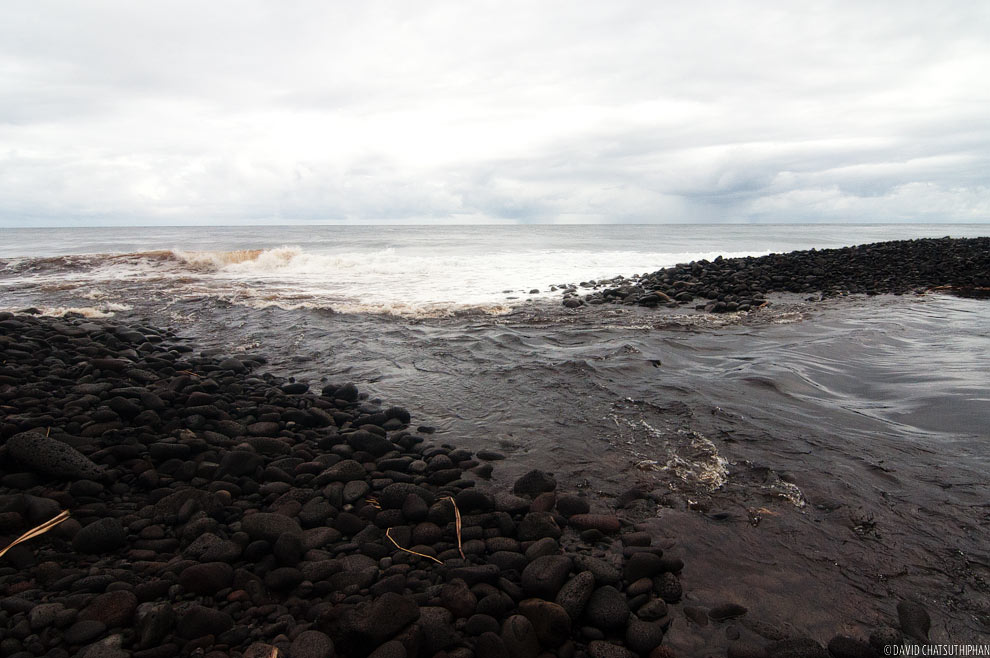
Waimanu Stream had risen and crossing the stream with our packs on would be tricky.
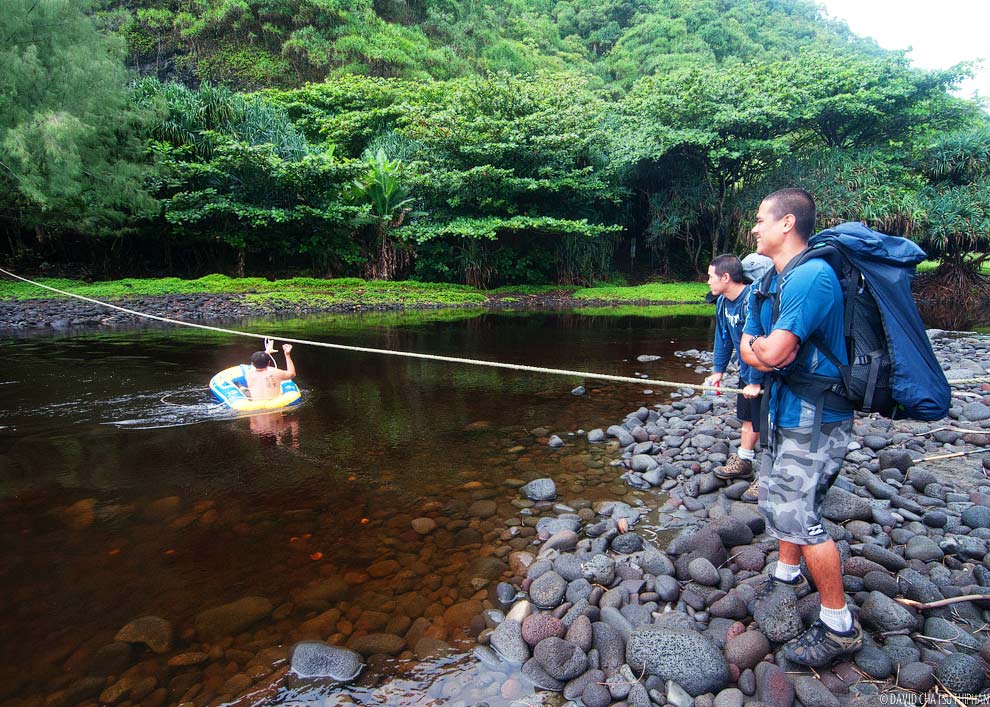
We noticed some people using a kids raft and the rope to float their packs over so we did the same. It was hilarious. I’m not sure where this raft came from but the crew using it before us said it was already there when they arrived.
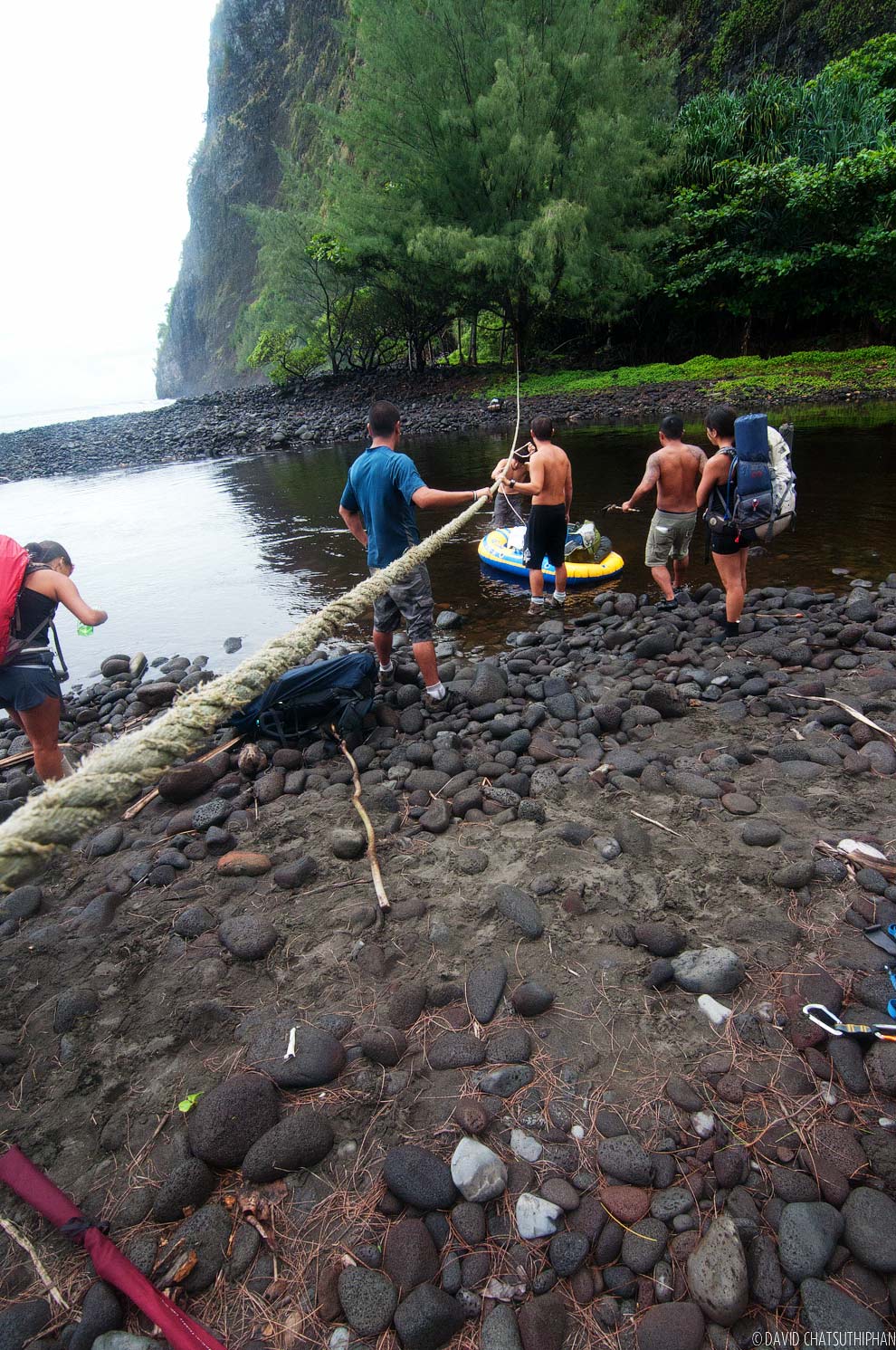
We used a short piece of rope to tie the raft to the big rope that spans the stream. This would ensure that the raft (and our packs) would not flow into the ocean. Then we loaded up the raft with packs and pulled the raft across as we waded through the stream. Towards the middle of the stream though, the water was head high and we had to use the rope to pull ourselves across.
Had the raft not been there I’m not sure what we would have done. I think we could have strapped our packs to the big rope pulled them across. Or, we probably could have asked to borrow one of our neighbors’ kayaks.
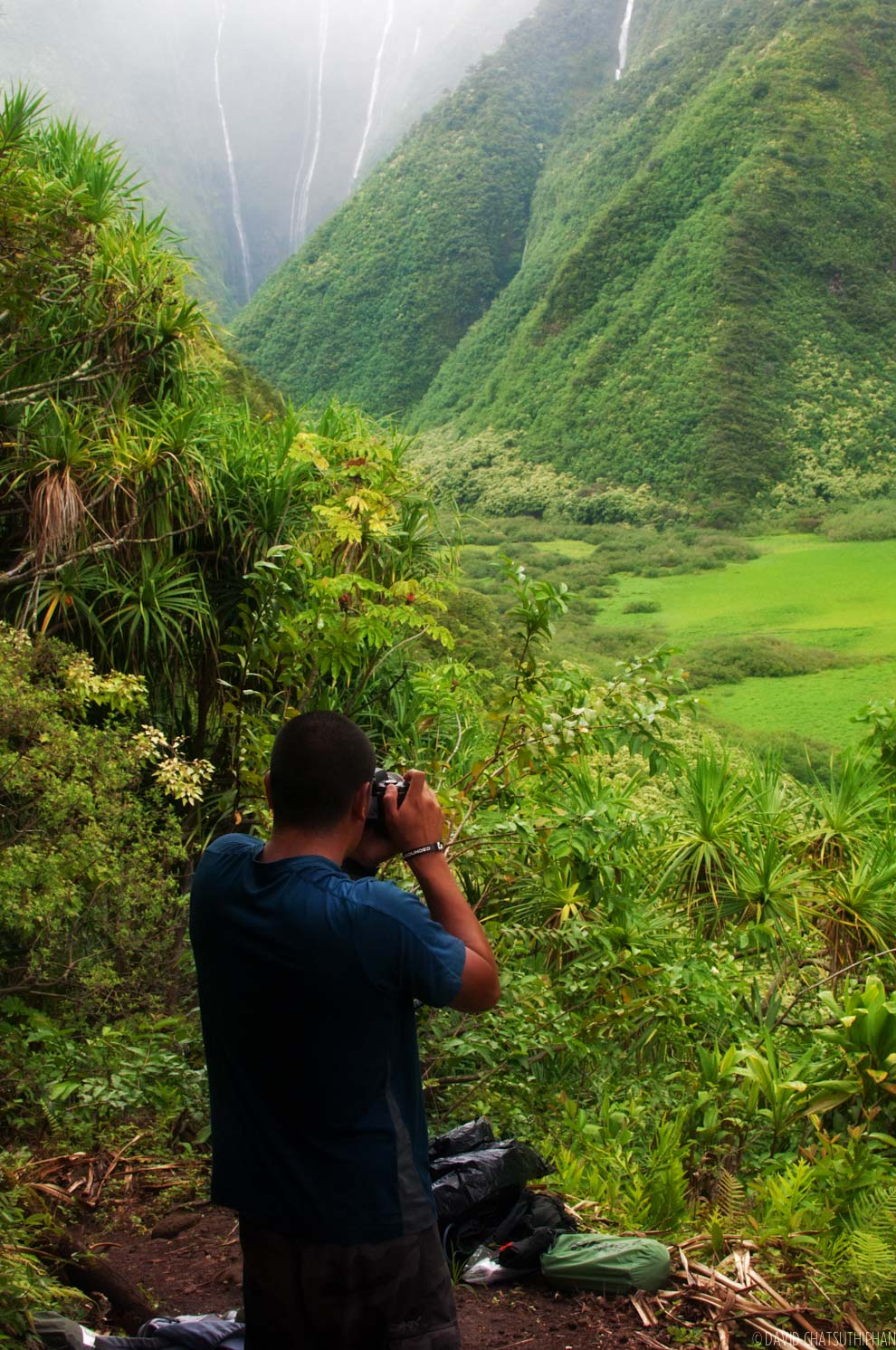
It took 45 minutes or so to figure out and execute our stream crossing plan. But we were finally on the Muliwai Trail. Everyone had packed their cameras away but when we saw this view we figured we might as well take more photos. After all, we had come all this way.
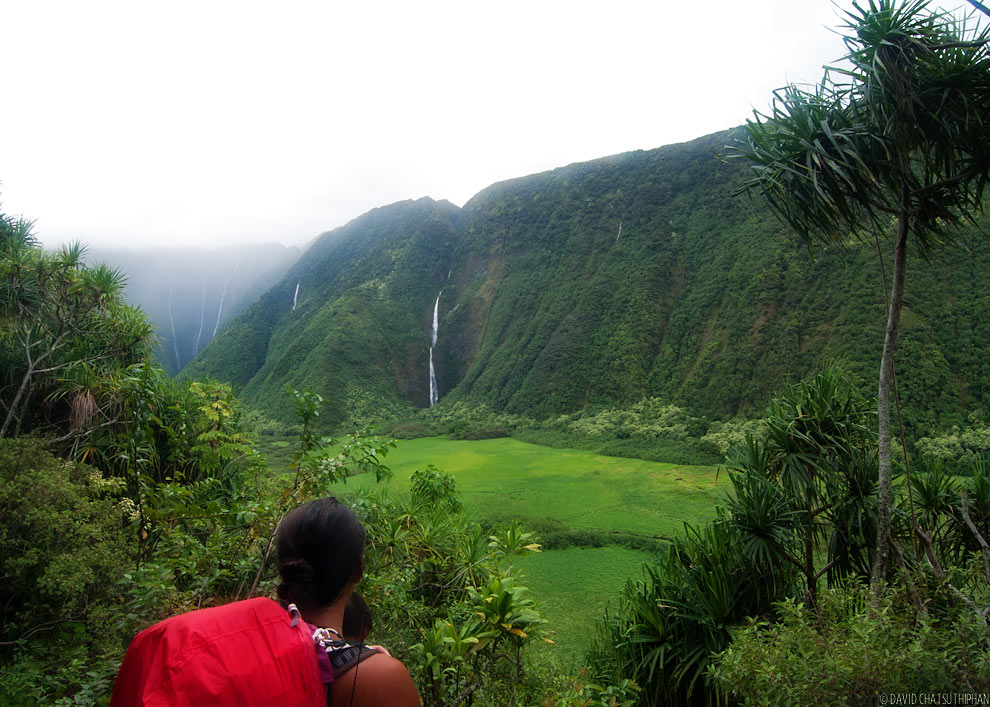
The valley was looking lush.

A couple miles in there’s a hunter’s shelter. You can reserve this shelter and camp here too if you like.
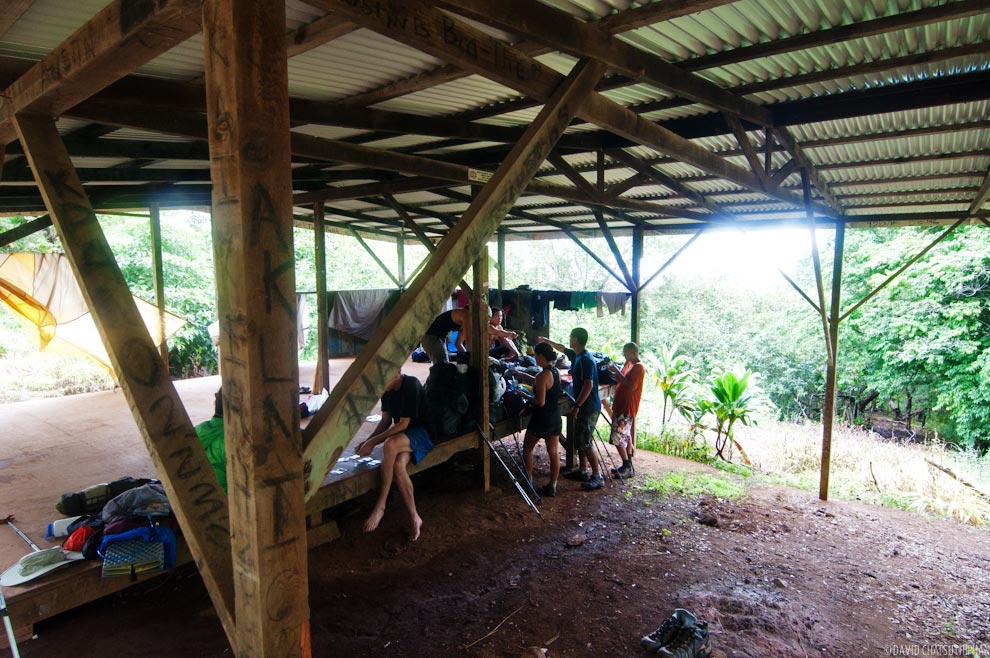
We paused here for brunch.

A few more miles into the trail is the Queen’s Bath waterfall. It was pretty dry on the hike in but now it was … we’ll now it was still just a trickle.

But Ryan needed to cool off.

After approximately five hundred (give or take) more switchbacks we were finally approaching Waipio Valley.

All we had to do now was descend the Z-Trail.

This view of Waipio Valley does not get old.

This sign signifies the end of the Muliwai Trail and the end of your journey.
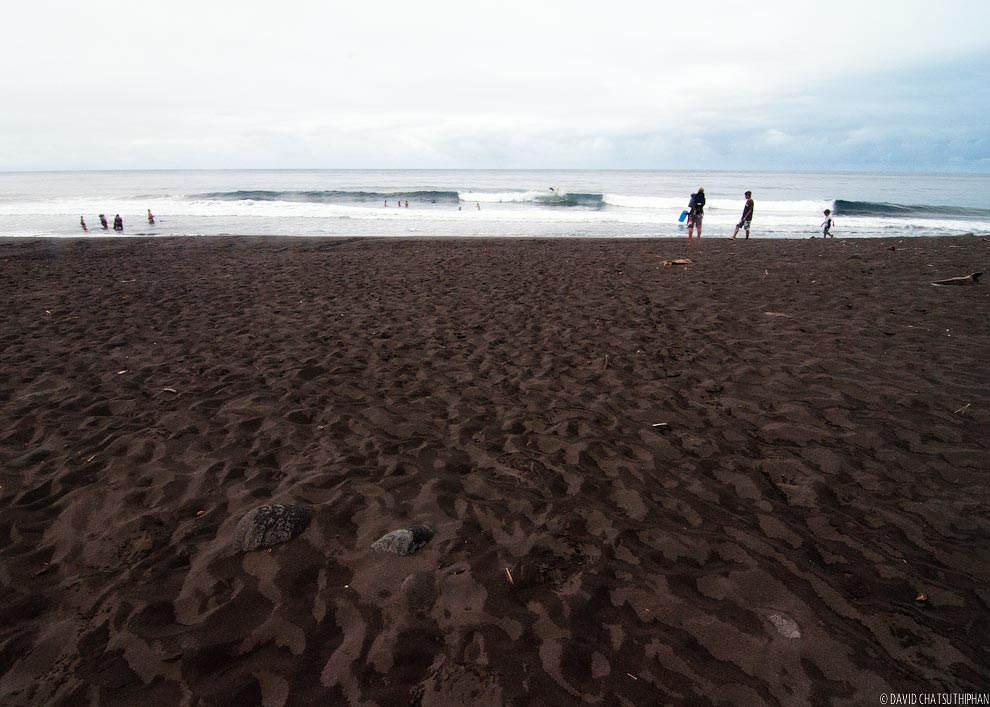
We relaxed at the beach until our ride showed up.
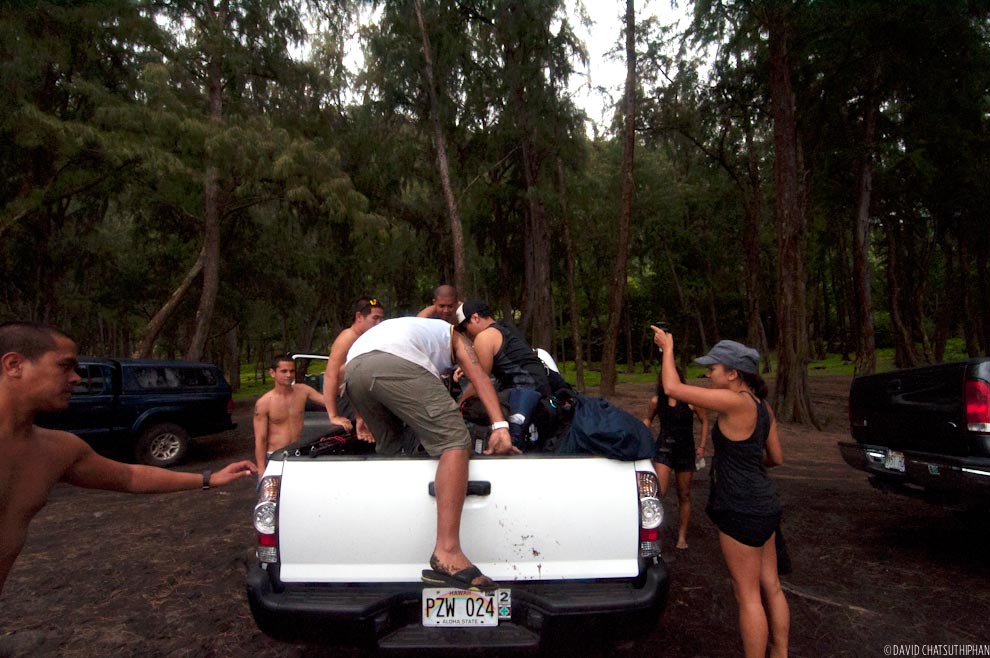
Once again, we were super lucky and Kaleo had arranged a ride for us all. Having to hike up Waipio Valley Road with our packs on would not have been fun.
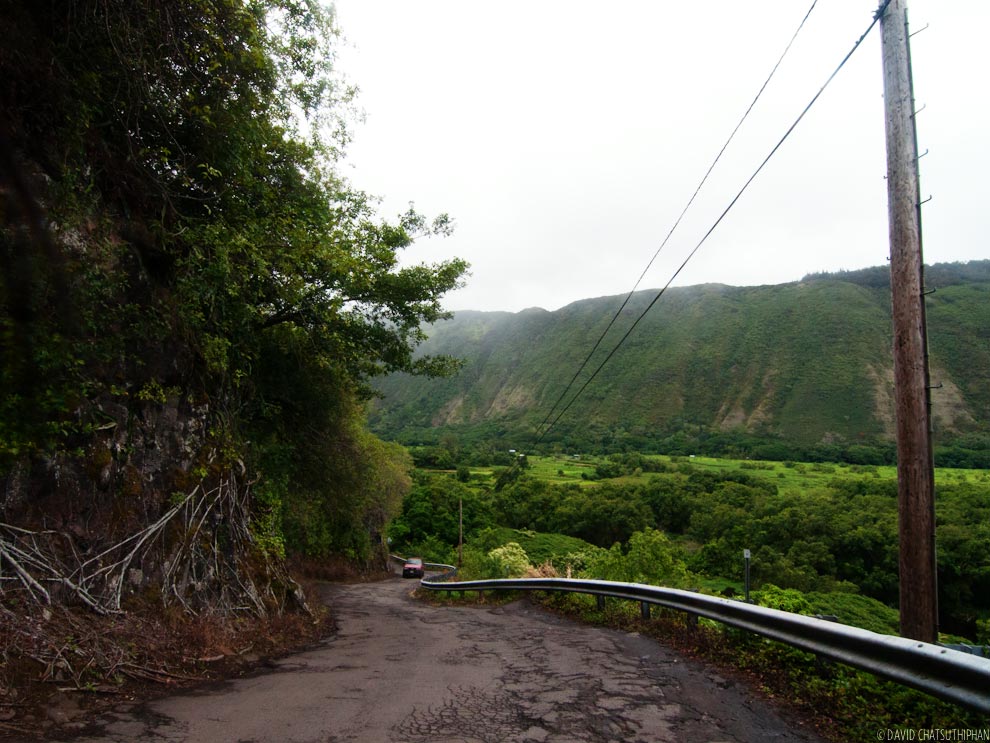
After a 18 miles of hiking and a couple nights of roughing it, getting trucked up a steep road felt amazing.
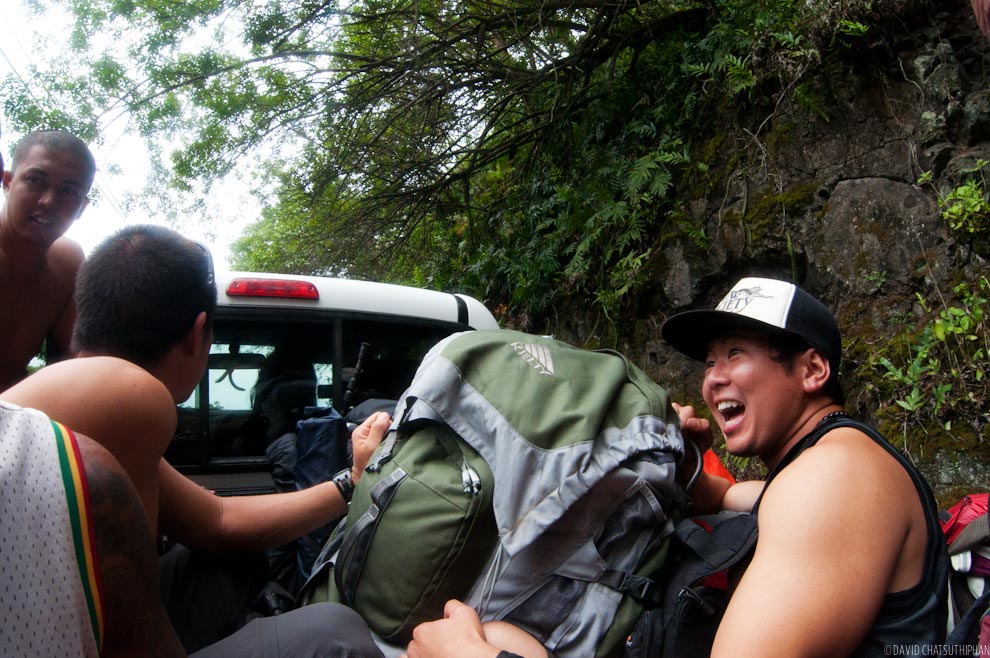
We were stoked.
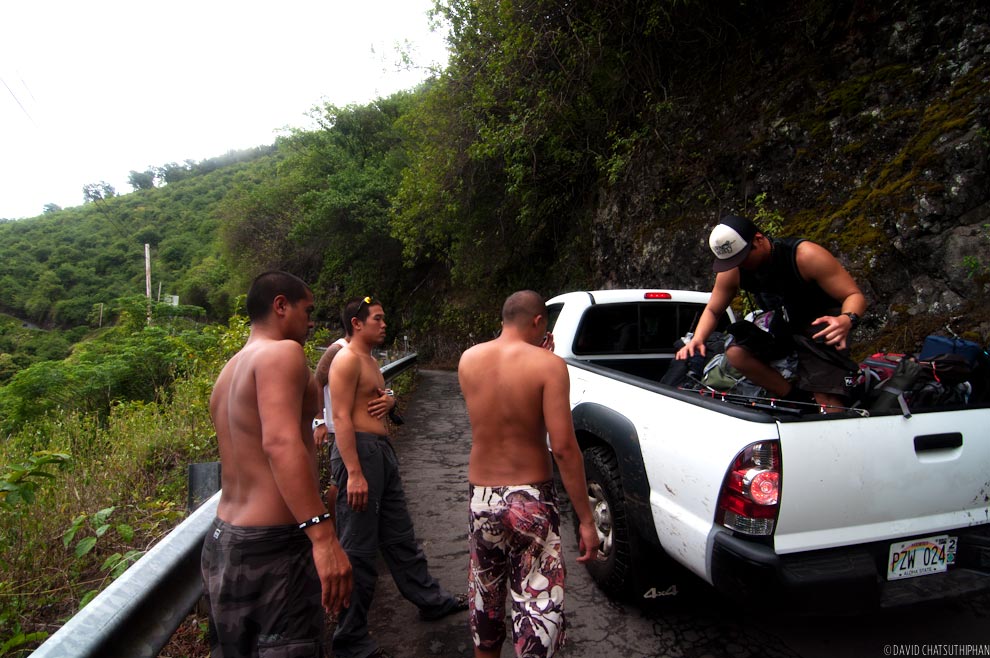
But the stoke lasted about 2 minutes. Shortly after getting onto Waipio Valley Road, we had to get off. With all the weight in the back and with the road being so steep, the truck’s front wheels were getting dangerously close to coming off the ground. But at least our packs could stay in the car.

Surprisingly, the walk up the road was not that bad. With our packs off and slippers on our feet, we jammed up this road.
At the top, we all said our farewells and made our ways back to Oahu. Over the next two weeks, we got to relive the trip by seeing everyone’s photos and all these videos.
The Waimanu Series
This is the fourth post in a five-part series on Waimanu. See more:
- PART 1: Waimanu Valley via the Muliwai Trail
- PART 2: Waimanu Valley Waterfalls
- PART 3: Waimanu Valley Camping
- PART 5: Waimanu Valley Video Recap


